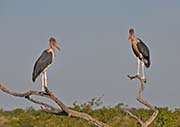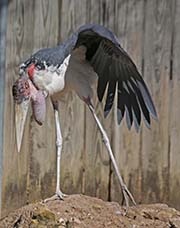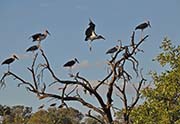Juvenile

03/13/2013 - Lowry Park Zoo, Tampa, FL
03/13/2013 - Lowry Park Zoo, Tampa, FL
|

03/13/2013 - Lowry Park Zoo, Tampa, FL
03/13/2013 - Lowry Park Zoo, Tampa, FL
|

03/13/2013 - Lowry Park Zoo, Tampa, FL
03/13/2013 - Lowry Park Zoo, Tampa, FL
|
Adult

04/23/2012 - Houston Zoo, Texas
04/23/2012 - Houston Zoo, Texas
|

Chick is just visible on the lower left
03/13/2013 - Lowry Park Zoo, Tampa, FL
Chick is just visible on the lower left
03/13/2013 - Lowry Park Zoo, Tampa, FL
|

Photo by Geanie Loken
04/27/2013 - Botswana
Photo by Geanie Loken
04/27/2013 - Botswana
|

Photo by Geanie Loken
04/27/2013 - Botswana
Photo by Geanie Loken
04/27/2013 - Botswana
|

Photo by Geanie Loken
04/28/2013 - Botswana
Photo by Geanie Loken
04/28/2013 - Botswana
|

02/22/2012 - Phoenix Zoo, AZ
02/22/2012 - Phoenix Zoo, AZ
|

04/23/2012 - Houston Zoo, Texas
04/23/2012 - Houston Zoo, Texas
|

Picture by Geanie Loken
04/27/2013 - Botswana
Picture by Geanie Loken
04/27/2013 - Botswana
|

Picture by Geanie Loken
04/27/2013 - Botswana
Picture by Geanie Loken
04/27/2013 - Botswana
|

Picture by Geanie Loken
04/27/2013 - Botswana
Picture by Geanie Loken
04/27/2013 - Botswana
|
|
|
Diet:
Marabou Stork are excellent fliers and will soar high above the ground looking for food.
Like vultures they will eat carrion and also like vultures they do
not have feathers on their head and neck which would be a hindrance in feeding
on carrion.
They also eat live prey such as small birds and their chicks, fish, frogs, insects,
eggs, reptiles, crocodile hatchlings and eggs.
They also eat human garbage.
It is reported that they will take advantage of grass fires.
They will march in front of the fires grabbing fleeing animals.
Courtship:
Marabou Storks are gregarious and flocks of up to 1,000
will roost together at night.
They also breed in colonies during the dry season.
The male will establish his territory and defend it
by inflating his throat pouch. Females do the actual courting.
Nesting:
Nests are built in trees, cliff-ledges, buildings by both sexes high above the ground.
The male brings the sticks and the female forms the nest.
The nests are three feet wide and are 33-100 feet above ground.
The nest is made up of sticks and lined with green leaves.
2-3 eggs are laid by the female.
Both parents will brood the nest and feed the chicks.
Regurgitate food is fed to the chicks.
Habitat and Range:
They inhabit savannas, grasslands, swamps, riverbanks and lakeshores in Africa,
south of the Saharan Desert.
Vocalization:
They are not very vocal birds but will use their throat sac to make noises during courtship.
They also defend their territory by making various sounds such as grunts,
squeak, whistles and by clacking their bills.
Plumage/Molt
Marabou storks molt their feather sequentially, continuously and slowly.
The duration of molt varies with type of feather, and is 1 year for primaries
and 12-15 months for secondaries.
Migration:
Marabou Stork or are sedentary or locally nomadic.
They movements are influenced by availability of water and prey.
Tongue/feet:
Dark gray feet and legs.
The toes are short and basally webbed.
Bibliography:
- http://en.wikipedia.org The Free Encyclopedia, Accessed July, 2012
- http://arkive.org Arkive: Images of life on earth, Accessed July, 2012
- http://www.oregonzoo.org/discover/animals/ Oregon Zoo, Accessed July, 2012
- http://birding.krugerpark.co.za Kruger Park Birding Guide, Accessed July, 2012
- http://birdlife.org BirdLife International, Accessed July, 2012
- Hollamy, Simon, et.al.,, "Mercury and persistent Organiz Pollutant Concentration in African Fish Eagles, Mrabou Storks, and Nile Tilapia In Uganda" Journal of Wildlife Diseases ,2012
Top of Page












